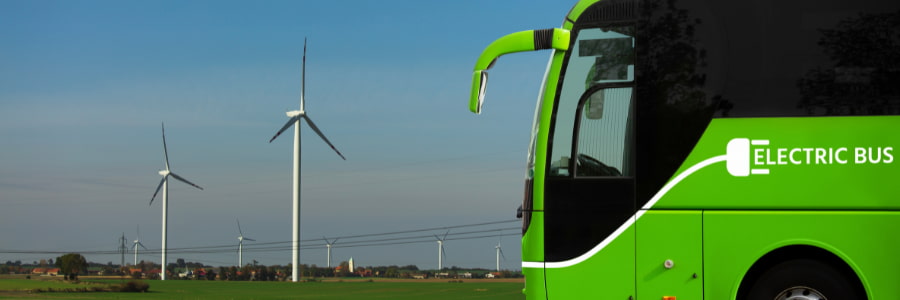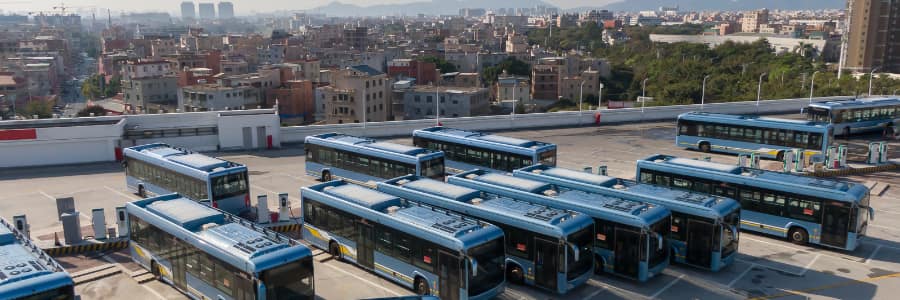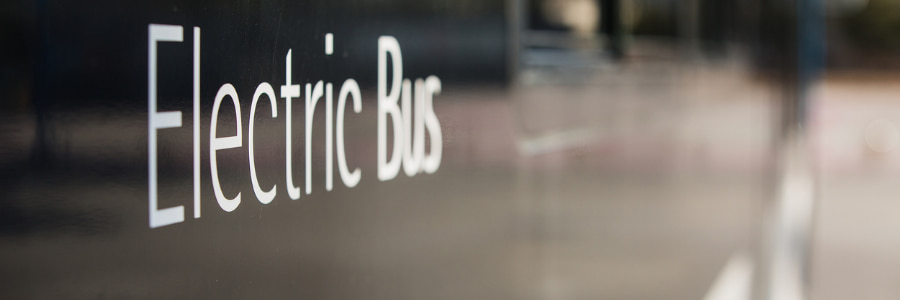Electric bus (EV bus) operations quietly reshape public transportation, having a breakout 2023 in many places.
Norway, Switzerland, and China saw EV buses account for over 50% of bus sales in 2023. Canada, Poland, The Netherlands, Chile, and Sweden also reported strong sales growth. Many regions are also setting ambitious targets to electrify their public transportation fleets in the coming years.
With EV bus numbers rising and new legislation being passed, the question of how to optimise electric bus operations becomes increasingly pressing for EV fleet managers.
It is a question that requires rethinking parts of fleet operations, such as balancing charging schedules, optimising routes, and integrating new technologies.
The good news is that technological tools massively increase the ability to do so, unlocking their full potential for cleaner, smarter, and more cost-effective transport.

Electric buses offer a range of benefits over their fossil fuel-powered cousins. Zero tailpipe emissions make them far more environmentally friendly and healthier for people in and around them. Silent operations are also hugely beneficial in urban environments.
The most significant fleet management benefit of EV buses is likely the lower lifetime cost of operations.
For example, analysis shows that in the USA, an electric school bus can be more than US$100,000 cheaper over the course of its operation period than a diesel-powered bus.
While the initial buying costs are higher, EV buses save fleet managers money on maintenance. This is in part because electric vehicle engines have fewer moving parts. Similarly, EV bus fleet managers stand to make significant savings on fuel expenses.

Electricity can be the cheapest way to power a vehicle – including buses.
EV fleets in the USA using school buses from Blue Bird have reported costs of about 14 cents a mile, compared to diesel fuel costs of around 49 cents per mile. Similar savings levels can be expected elsewhere in the world.
However, achieving lower prices is contingent on being able to time charging to coincide with the lowest rates. Here, advanced smart charging solutions enable fleet managers to optimise results. An added benefit is that the buses can create new revenue streams. One example is supporting energy flexibility and grid stability by participating in utility companies’ managed charging programmes.

Most EV bus charging tends to happen overnight or during off-peak hours. However, some buses will need additional quick charging during peak operational hours.
The exact charging needs and optimal solution will depend on routes, busses available, backup needs, and more. While much of this will sound familiar to fleet operators and managers, EV buses differ in the need for charging stations and associated electric and electronic infrastructure. Additional energy grid connections may also be needed to power them.
Deciding on optimal depot setup, electric connections, and EV chargers are complex calculations.
Luckily, software-based tools on the market can help you simplify these calculations. The same applies to figuring out the best routes, charge timing, and which buses fit your needs.

Routes and operational requirements form the starting point for selecting the optimal fleet combinations and charging solutions.
For example, smaller fleets with predictable schedules can often rely on depot charging. In comparison, larger fleets may require a combination of depot charging and fast opportunity charging to ensure buses are always operational. You may also need buses with larger batteries to cover longer routes. This has a knock-on effect on charging choices.
Similar considerations apply to charging scheduling, which is crucial for optimising electric bus fleet operations.
To minimise costs, fleet managers should ensure that buses are charged during off-peak hours whenever possible. Charging management software with advanced smart charge features can automate this process, scheduling charging sessions based on grid demand and energy prices.

Fleet managers should carefully weigh available economic incentives when making EV bus fleet decisions.
Today, many countries and regions offer tax breaks, grants, or subsidies to support the transition to electric vehicles – or specific areas connected with this transition.
Another area to consider is whether energy companies in your area of operations offer financial benefits for charging during off-peak hours or managed charging programs where the energy provider partially controls charging schedules.
Regulations and incentives in the space are continuously evolving, making it essential for fleet managers to stay informed of current and upcoming policies to make well-informed decisions.

Another area seeing continued development is the demand for electric buses.
Considering regulatory and public pressures, fleet managers should ensure their fleet setup is scalable. One specific area is ensuring that current investments in charging infrastructure can handle changing needs over time.
Adding additional charging stations or expanding depot capacity in many smaller steps will often prove the more costly approach. Future-proofing your charging strategy ensures that it remains cost-effective and operationally efficient as the fleet grows.
Renewable energy integration is another area affecting bus charging infrastructure. For example, there may be financial and operational benefits of considering an on-site microgrid setup.
By utilising solar panels or wind power to generate electricity on-site, fleet operators can reduce their reliance on the grid and decrease their overall energy costs.
Additionally, vehicle-to-grid (V2G) technology is in development and could dramatically expand fleets’ revenue opportunities while supporting grid stability.